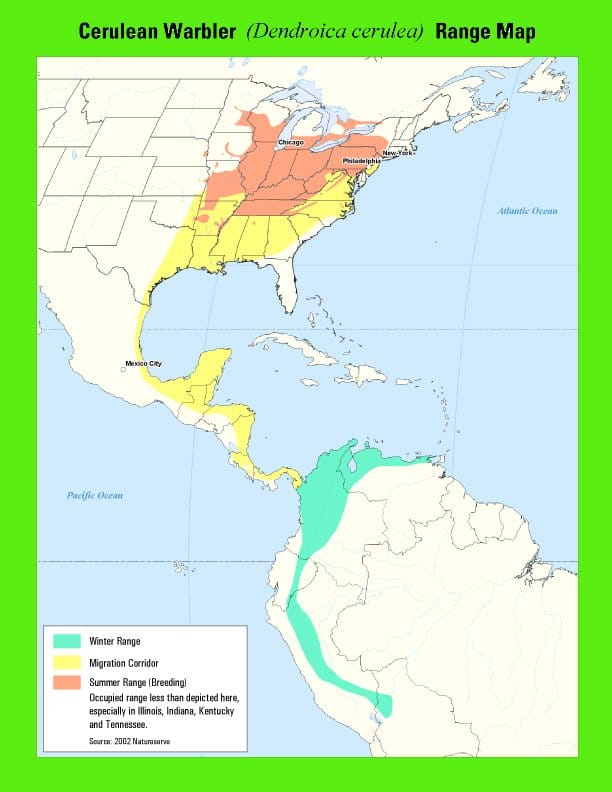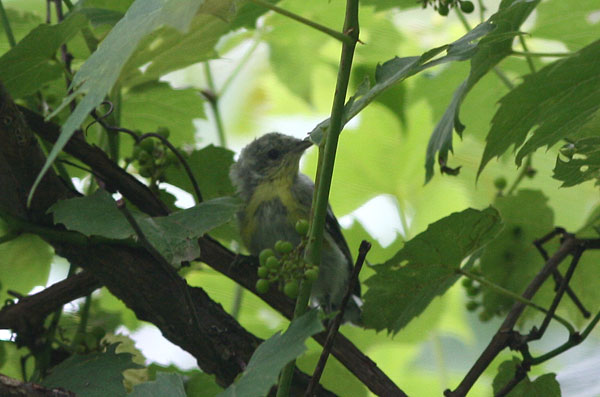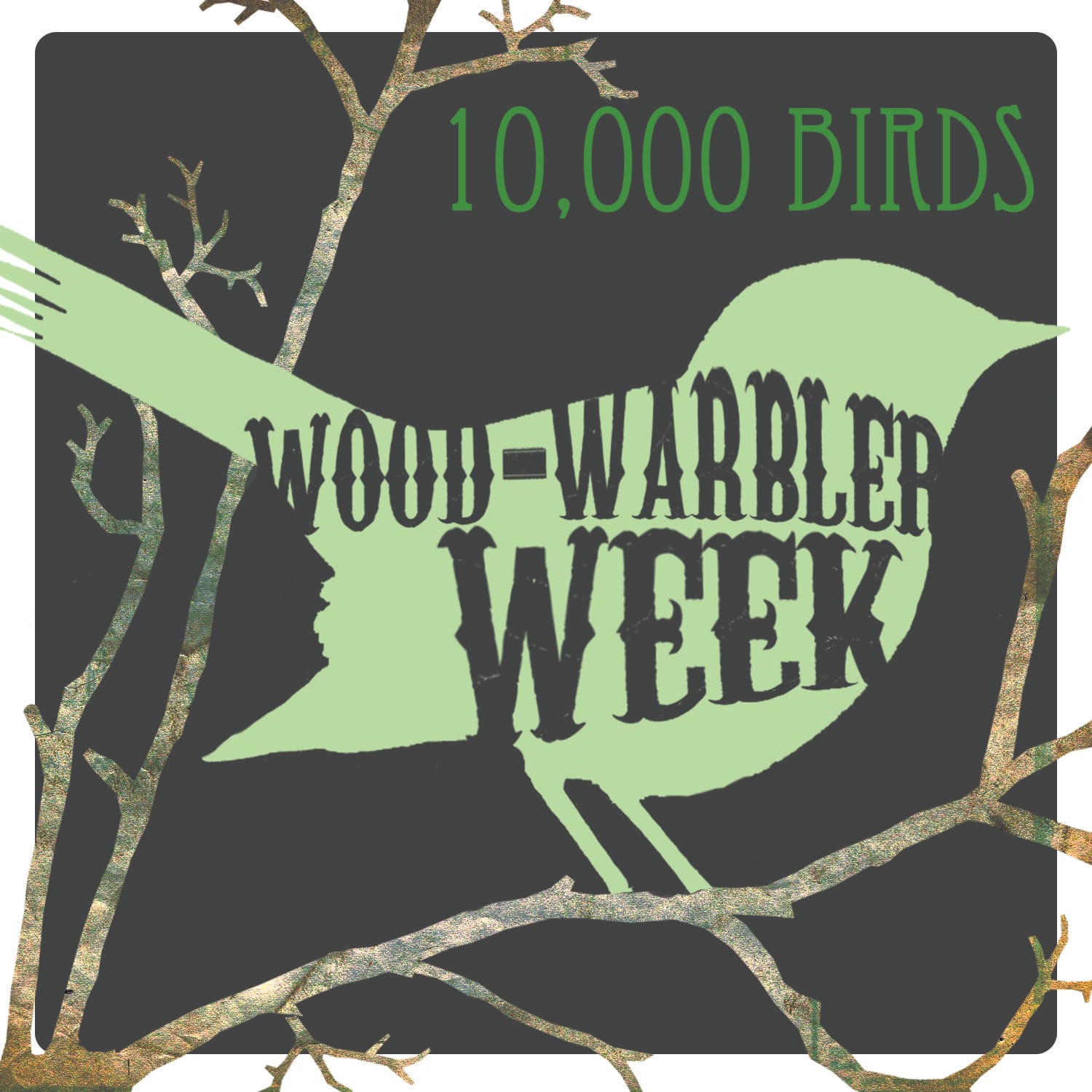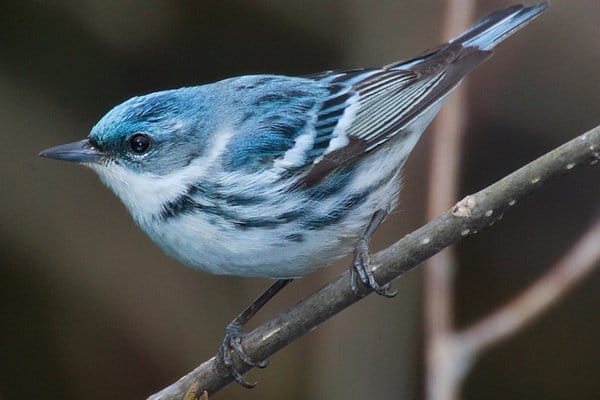Like many birds in these days of rampant development, overconsumption, population growth, and global warming, the Cerulean Warbler faces a host of threats to its survival as a species. BirdLife International lists the Cerulean Warbler as Vulnerable because of “a large and statistically significant decrease over the last 40 years in North America” that is equivalent to “a -35.8% decline per decade.” Surely it should be no problem to halt the decline of such a striking and charismatic creature, right? Well…
The U.S. Fish and Wildlife Service found Dendroica cerulea to be not eligible for listing under the Endangered Species Act in 2006 after pressure from National Audubon Society, Southern Environmental Law Center, Defenders of Wildlife, and others. And under the strict tenets of the Endangered Species Act the service might very well have been correct to do so. Essentially, the U.S. Fish and Wildlife Service acknowledged the sharp decline in the Cerulean Warbler population and the threats that habitat destruction and fragmentation pose but also noted that at current rates of decline Cerulean Warblers will still number in the tens of thousands in one hundred years and are therefore in no imminent danger of extinction. If you think that I am making this up check out the press release:
Although there is no precise estimate of the current abundance of the cerulean warbler, the Service used a 1995 population estimate of 560,000 warblers during its review of the species’ status. Based on 40 years of data obtained through the Breeding Bird Survey which indicates the population is declining at about 3 percent each year, the estimated population in 2006 would be approximately 400,000. At this rate of decline, the Service estimates the cerulean warbler population would number in the tens of thousands 100 years from now.
Even though current trends indicate that after a hundred years the number of Cerulean Warblers will be a tiny fraction of what it is today they are not listed under the Endangered Species Act. This is not a failure of the act or of the United States Fish and Wildlife Service but a failure of imagination. Acknowledging the sheer number of species in free-fall and expending resources to save each of them separately is beyond the capacity of our country’s economy. We (and I speak as an American here) have so ravaged our land and our rapacious appetites have caused and are causing others to ravish their own lands that we are destroying far too many species far too rapidly to even enumerate, much less protect.
The Cerulean Warbler, a charismatic little blue creature with spunk and verve, is a canary in our global coal mine, almost literally – one of the big causes of the destruction of Cerulean Warbler habitat is mountaintop removal mining, an horrific example of environmental destruction on a scale that can hardly be imagined. As the Cerulean Warbler goes so goes our environment and the Cerulean Warbler is in freefall. Yes, it seems doubtful that Dendroica cerulea will go extinct any time soon but leaving a few tens of thousands of birds as a tiny remnant of the  original population in what little habitat that we don’t destroy is nearly as horrifying an outcome. Especially because while we might not let the Cerulean Warbler slide down that slippery slope to oblivian a horde of other creatures will go extinct that we never even noticed. Amphibians and insects and mollusks and fish aren’t pretty and blue and visible so they will disappear, both in the Andes Mountains that serve as wintering grounds and the temperate forests of North America that serve as breding grounds for the Cerulean Warbler and everywhere in between. We need to focus on ecosystems and causes of ecological collapse, not symptoms and individual species.
original population in what little habitat that we don’t destroy is nearly as horrifying an outcome. Especially because while we might not let the Cerulean Warbler slide down that slippery slope to oblivian a horde of other creatures will go extinct that we never even noticed. Amphibians and insects and mollusks and fish aren’t pretty and blue and visible so they will disappear, both in the Andes Mountains that serve as wintering grounds and the temperate forests of North America that serve as breding grounds for the Cerulean Warbler and everywhere in between. We need to focus on ecosystems and causes of ecological collapse, not symptoms and individual species.
What did come out of the attempt to get Dendroica cerulea listed is A Conservation Action Plan for the Cerulean Warbler (Dendroica cerulea), which was produced for the US Fish and Wildlife Service in the revised form linked in 2007. In the plan a “critical need” of the Cerulean Warbler Technical Group (CWTG) is identified in order to allow “communications and outreach.” This need is “a Cerulean Warbler conservation website.” Sadly, it appears that four years later no such website exists. Because it was not listed under the Endangered Species Act the Cerulean Warbler does not have the government specifically tracking its status. The CWTG was formed to fill that gap but it appears that the group has failed in a “critical need” of the project and what information is available online seems out of date and scattered. Does the CWTG still exist? Does it still meet? Without the resource of an up-to-date website, a necessity in 21st century conservation, I have not been able to figure out what is happening.
Fortunately, there are other non-governmental organizations that are working to save the Cerulean Warbler and all of the other organisms that share its ecosystems. One example is the World Land Trust, which has worked to preserve wintering grounds of the Cerulean Warbler in Ecuador and Columbia, where the bird is known as Cielo Azul. The American Bird Conservancy has also been very active in Columbia in purchasing and conserving wintering grounds.* Preserving wintering grounds of the Cerulean Warbler can be particularly vital because the same birds use the same wintering grounds year after year. The thought of a Cerulean Warbler completing a migration of thousands of miles to arrive at winter habitat that has been converted into, say, a sun-drenched coffee plantation is a thought on which I choose not to linger.

Cerulean Warbler fledgling… something we need to see more of!
What is the future of the Cerulean Warbler? It is tenuous, worrisome, and fraught with peril. It is clear that the bird is in serious trouble and it is just as clear that many people are working hard to help it rebound. As a blogger with limited time to research this blog post I am sure that I have missed some information so if you have access to more conservation stories or knowledge of more projects please leave a line in the comments. No one wants to see the Cerulean Warbler disappear but it seems that somehow, despite the best of intentions and a host of people doing good work, it just might be in danger of slipping through the cracks. The best hope for the bird to survive with a robust population is to halt the destruction of its habitat where it breeds, where it winters, and where it migrates. Here’s hoping that we can all get that done.
*Coincidentally, the Cerulean Warbler is also the American Bird Conservancy’s current Bird of the Week.
————————————————————————————————————————————————
 This week, 8 May – 14 May 2011, is Wood-Warbler Week on 10,000 Birds! Though wood-warblers, the mostly brightly colored birds of the family Parulidae, are only found in the New World we felt that birders the world over would be pleased to see a plethora of posts about these striking and sought after species. Though we are devoting a whole week to wood-warblers we really are only just barely scratching the surface of possible topics involving this amazing family of birds.
This week, 8 May – 14 May 2011, is Wood-Warbler Week on 10,000 Birds! Though wood-warblers, the mostly brightly colored birds of the family Parulidae, are only found in the New World we felt that birders the world over would be pleased to see a plethora of posts about these striking and sought after species. Though we are devoting a whole week to wood-warblers we really are only just barely scratching the surface of possible topics involving this amazing family of birds.
Right now great flocks of wood-warblers are making their way north from the southern United States, Mexico, the Caribbean, Central and South America to breed across the United States and Canada. Many other non-migratory species are living their lives across the neotropics, doing their best to survive and pass on their genes. Wood-Warbler Week is a celebration of all wood-warblers and we hope you join us in celebrating these absolutely wonderful birds. Read about them here but also get out and experience them. You won’t regret it!
————————————————————————————————————————————————














Corey, in spite of having done a survey for Ceruelan Warbler in Central Peru, I have never seen it. We were very unlucky with the weather during the survey – and I thus missed it. In Peru it is not very common. It also seems that the change of practice in the coffee growing areas in Peru also have an impact. What needs to be learnt is that Organic Coffee is not the same as birdfriendly. I don’t know if you saw this old blogpost of mine, but it does discuss this particular issue.
http://www.kolibriexpeditions.com/birdingperu/blog/index.php/organic-coffee-is-not-necessarily-birdfriendly/
Saludos
Gunnar